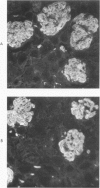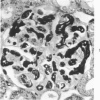Abstract
Previous studies have shown that renal cortical fibrinolytic activity is absent in rabbits given one or two injections of endotoxin. Using a fibrin slide technic, we have studied the effect of endotoxin on cortical fibrinolytic activity in rabbits depleted of terminal complement components (C3-C9) by cobra venom factor. The loss of cortical fibrinolytic activity induced by endotoxin is not prevented by pretreatment with cobra venom factor. Additionally, this complement depletion did not prevent development of glomerular fibrin deposition, cortical necrosis or thrombocytopenia in the generalized Shwartzman reaction.
Full text
PDF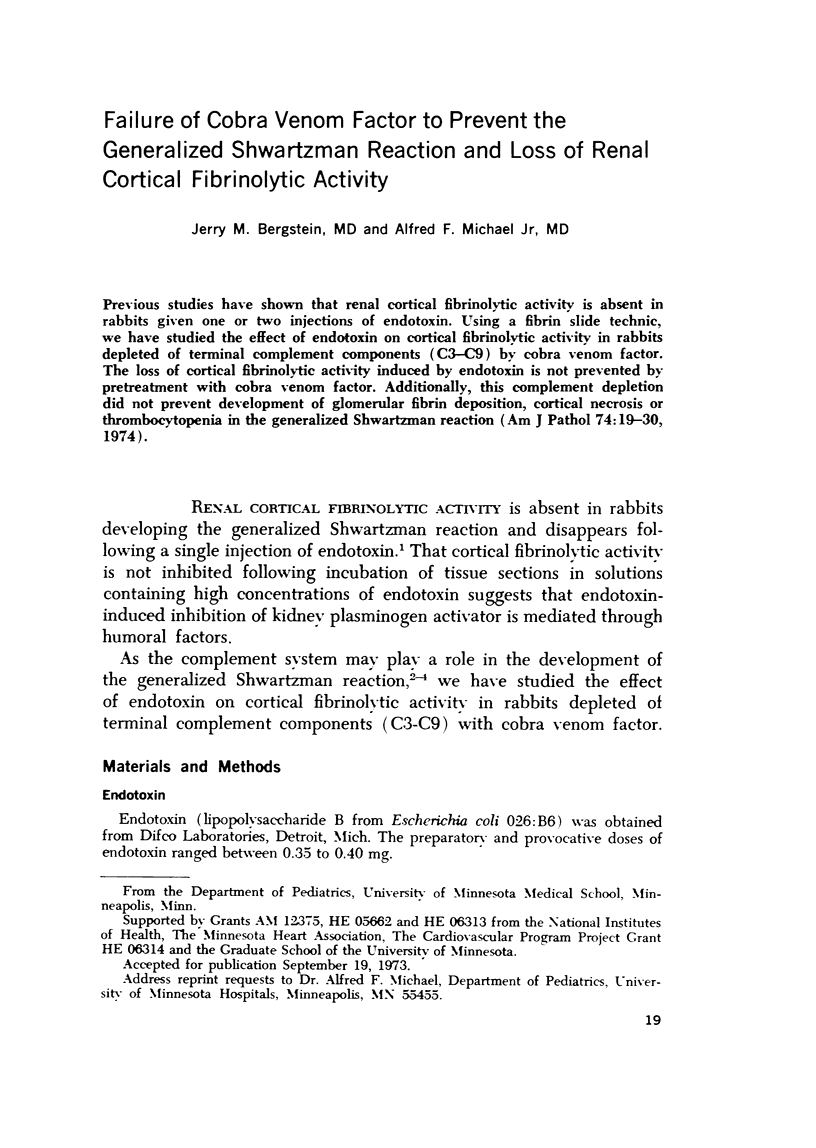
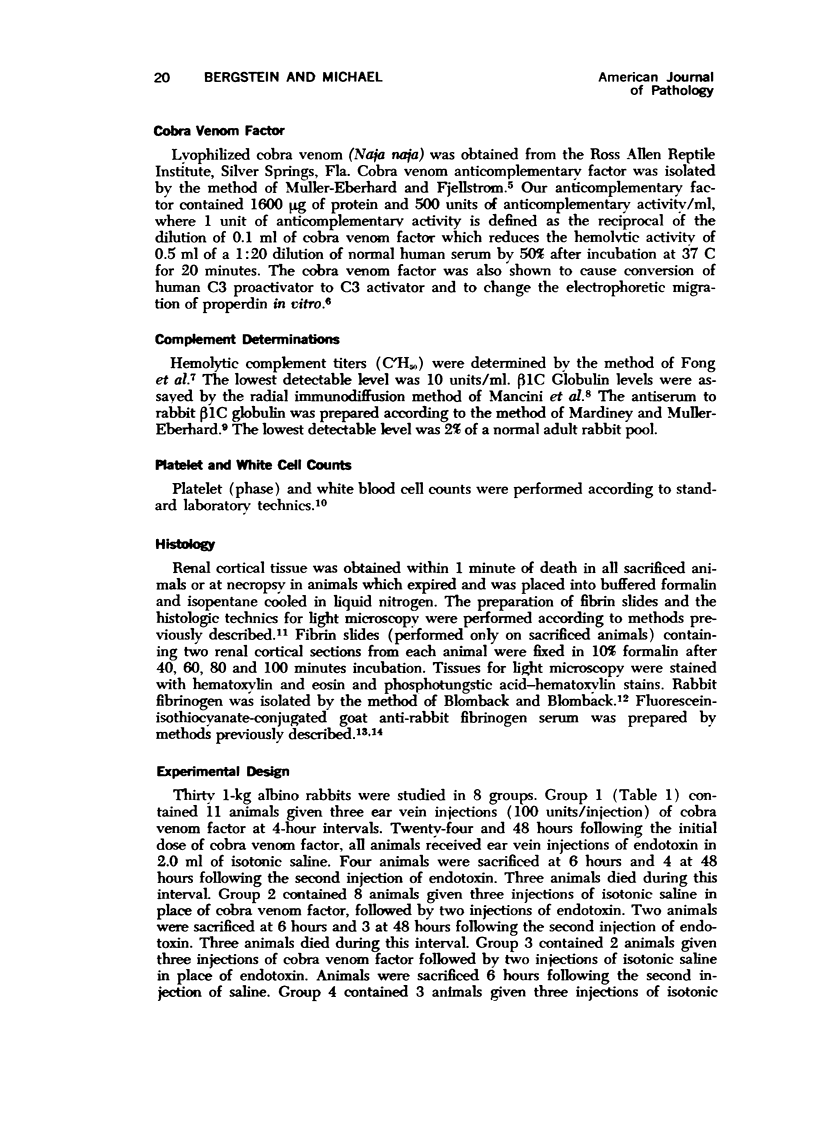
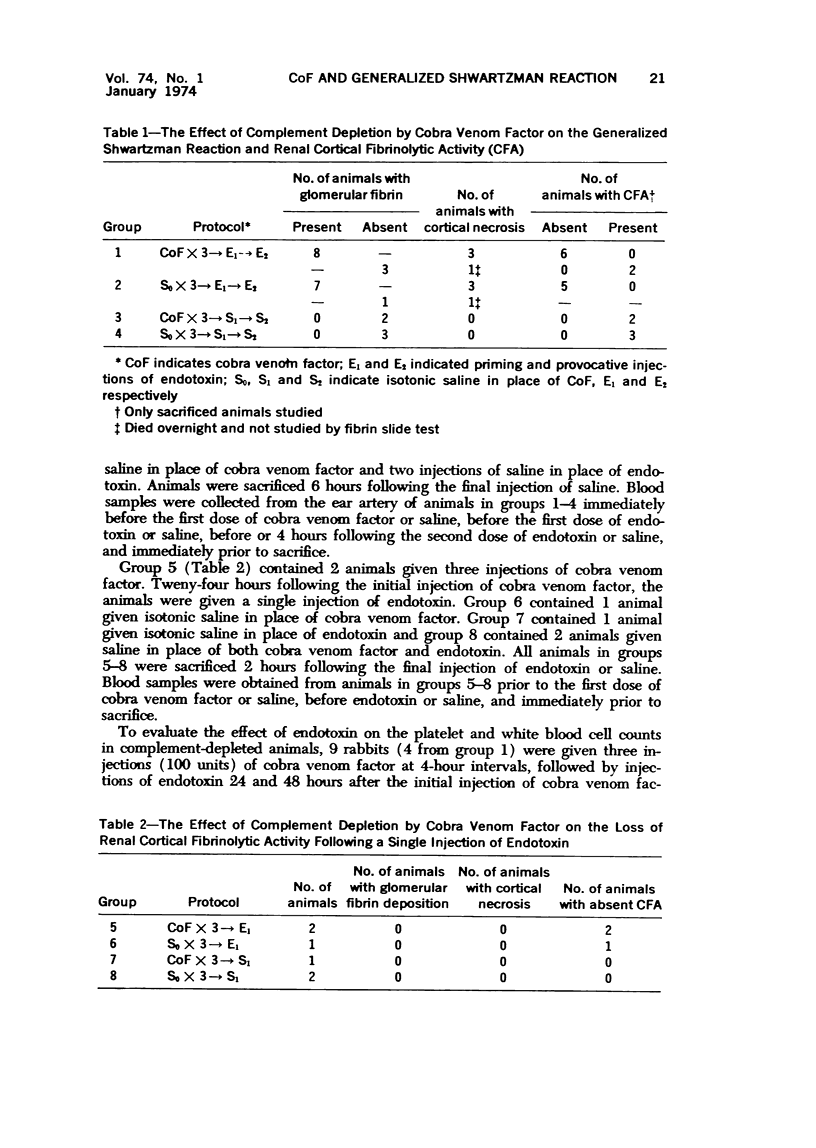
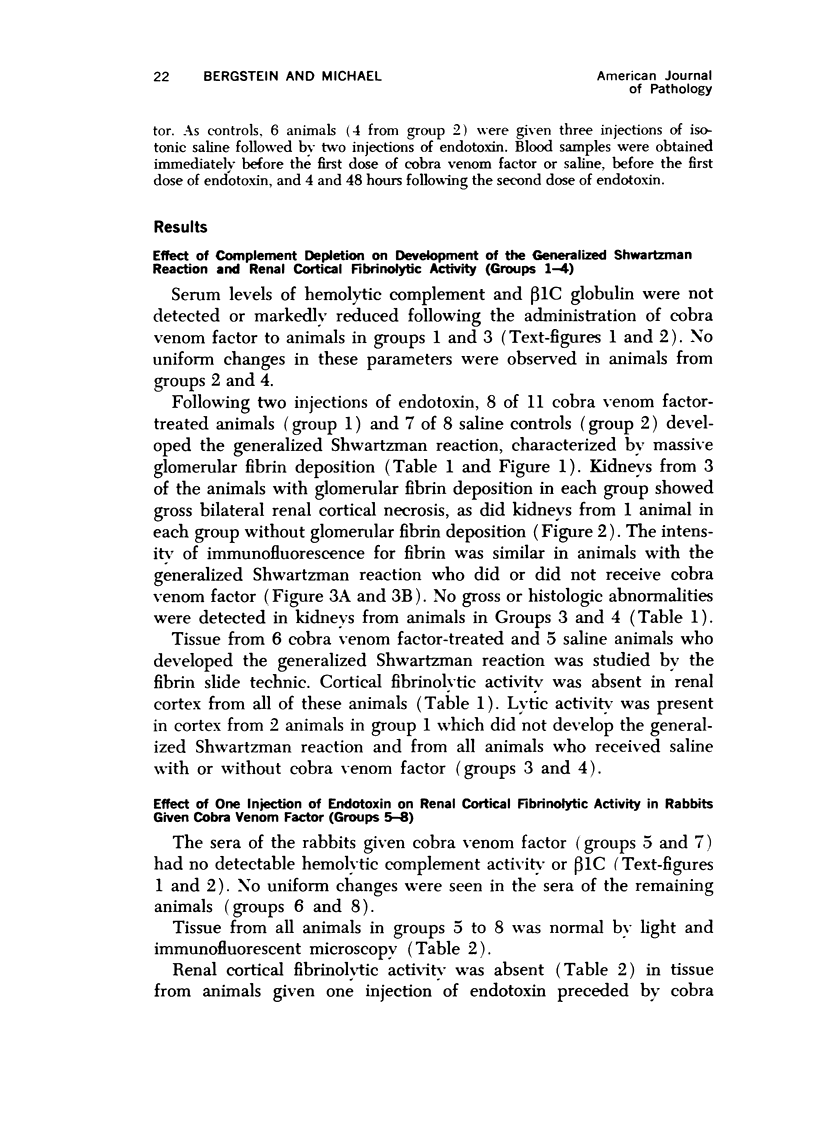
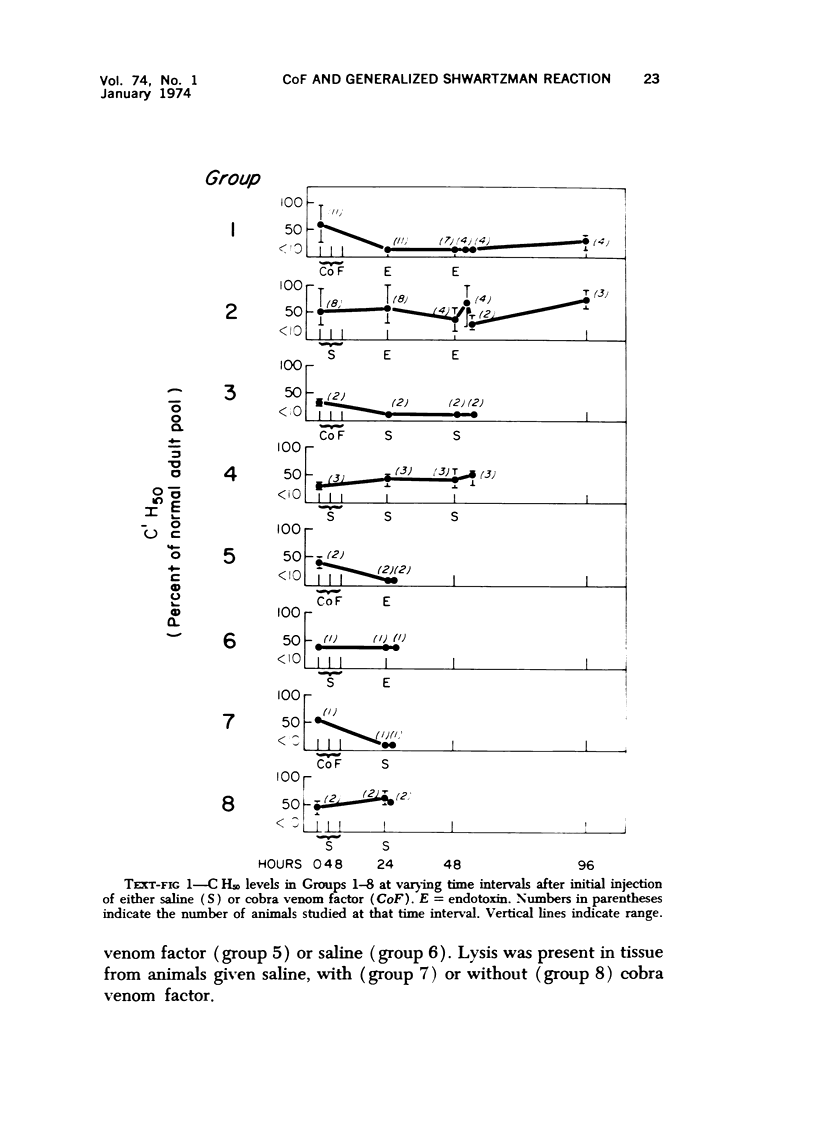
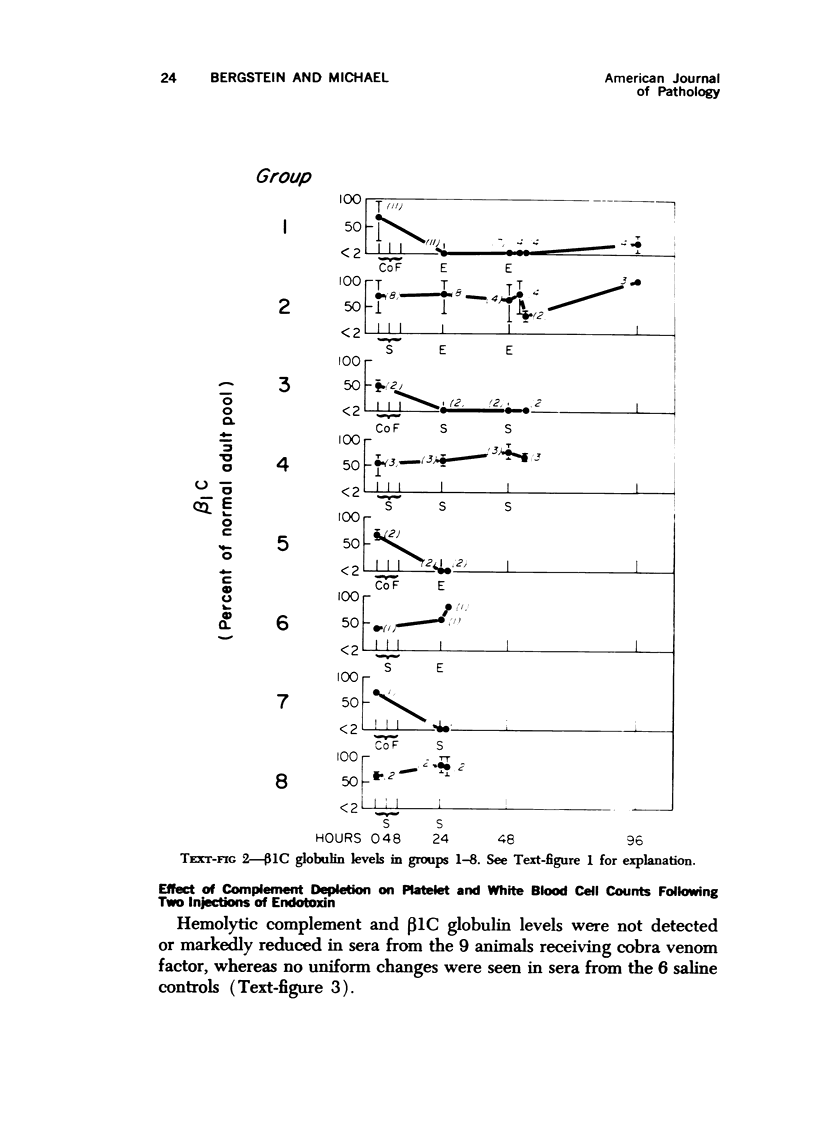
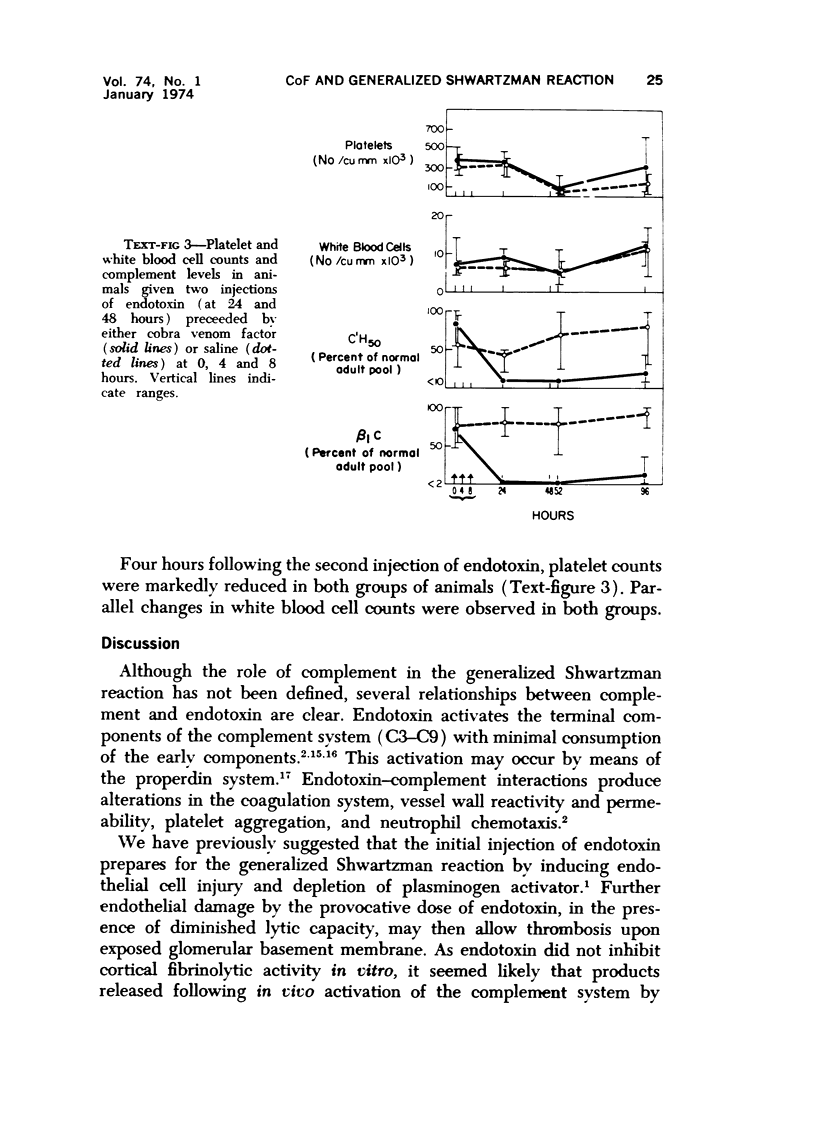
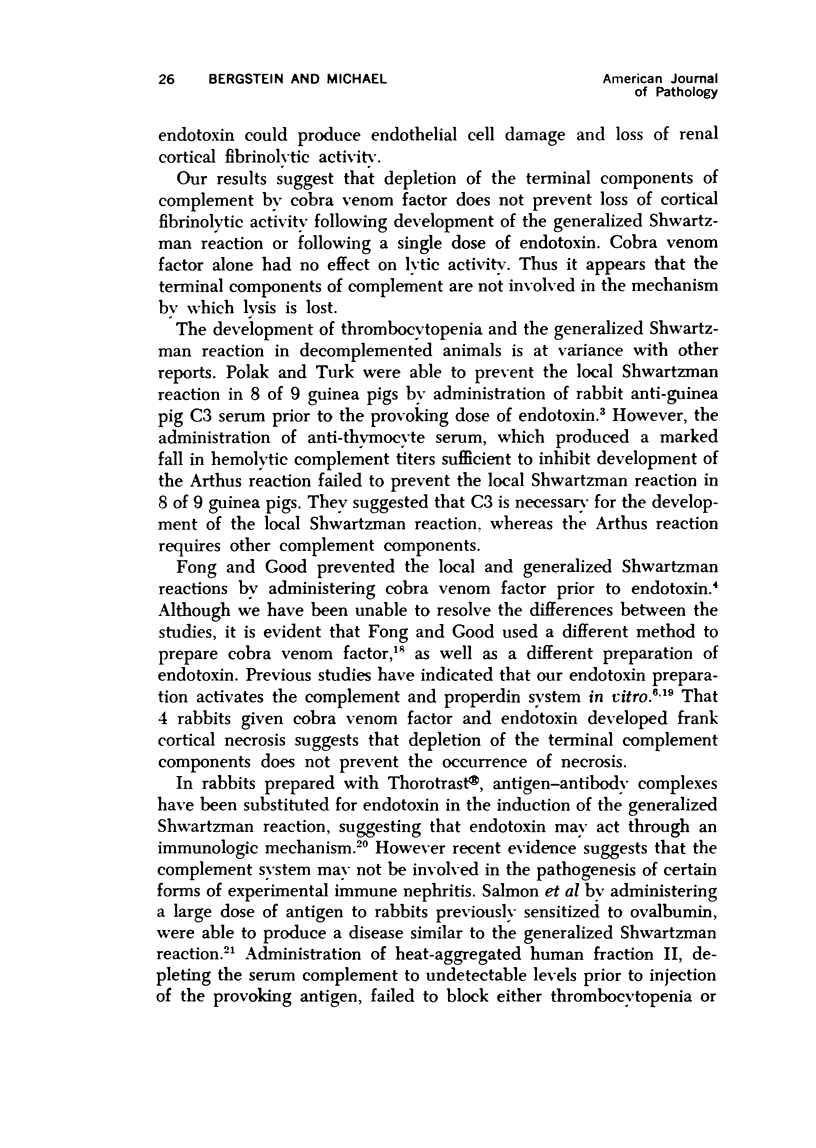
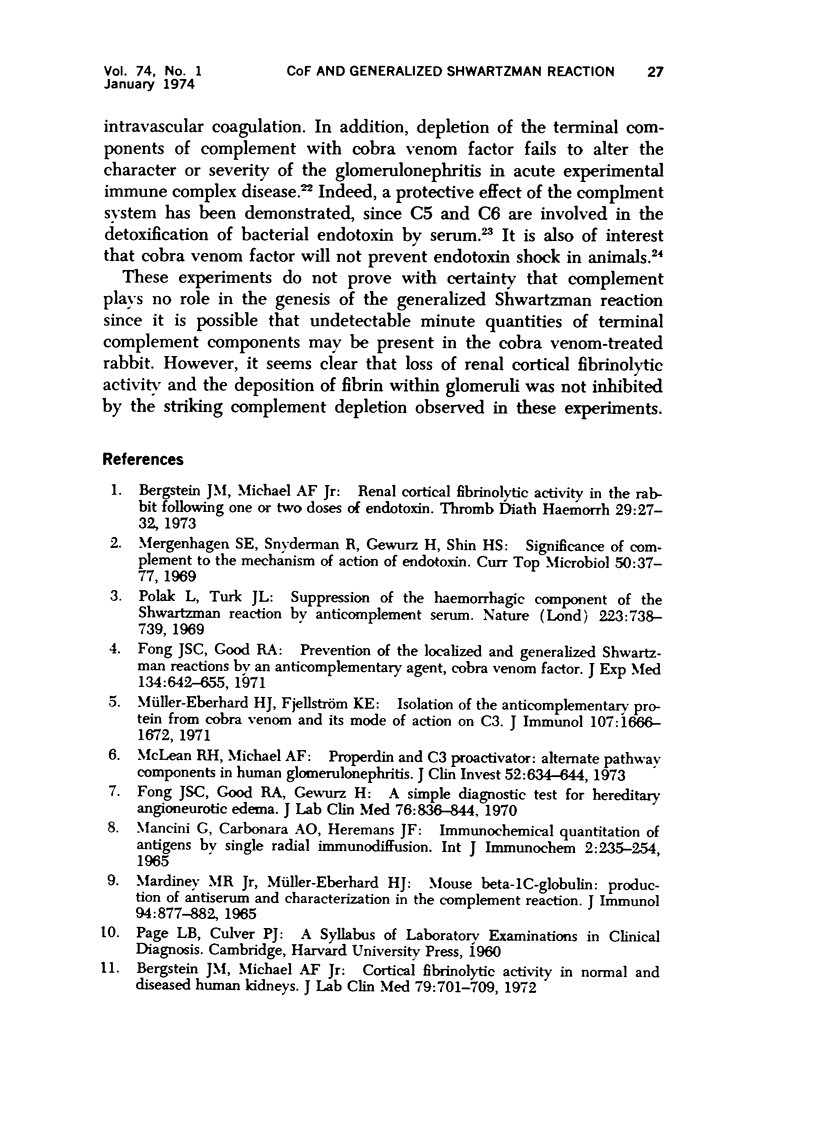
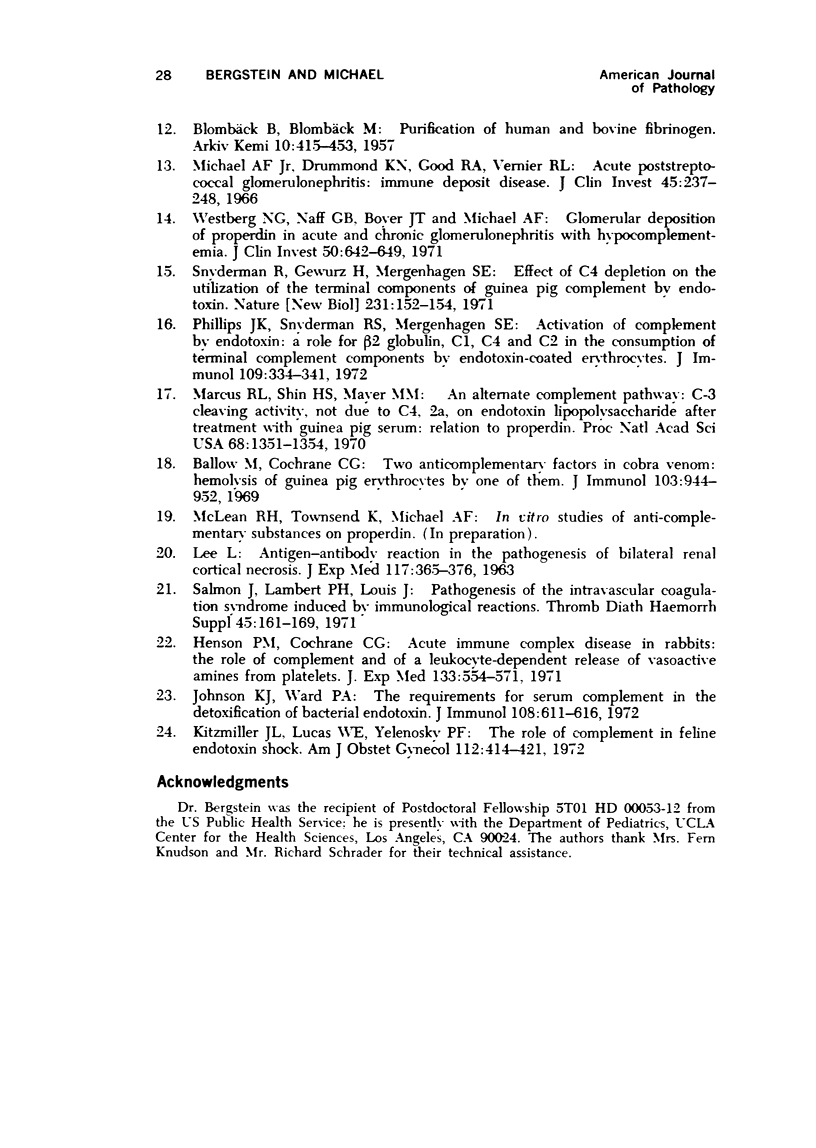
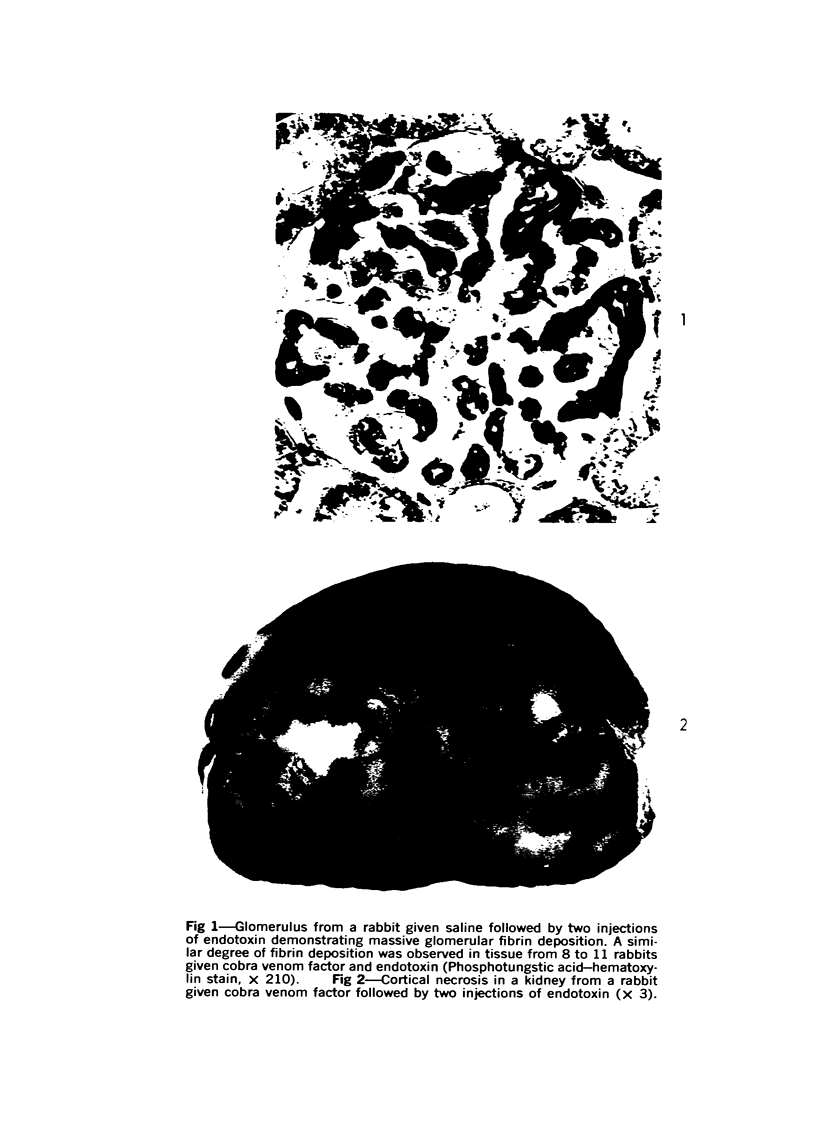
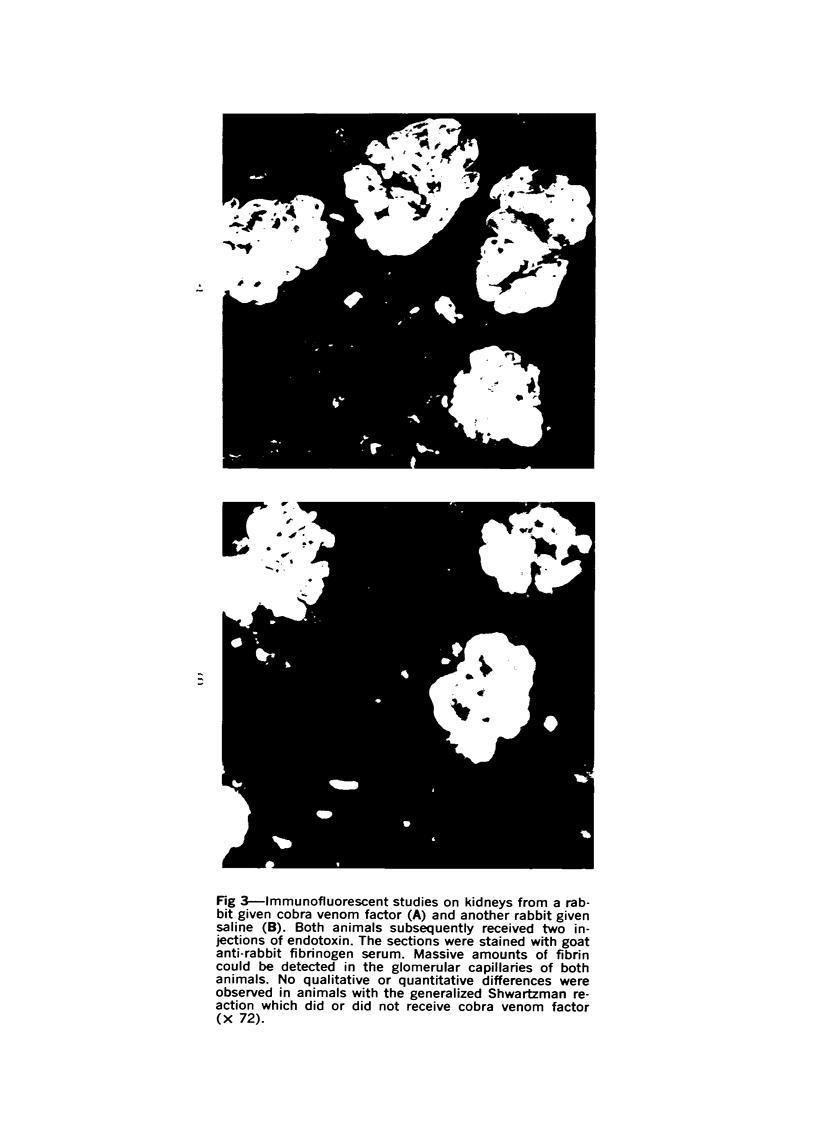
Images in this article
Selected References
These references are in PubMed. This may not be the complete list of references from this article.
- Ballow M., Cochrane C. G. Two anticomplementary factors in cobra venom: hemolysis of guinea pig erythrocytes by one of them. J Immunol. 1969 Nov;103(5):944–952. [PubMed] [Google Scholar]
- Bergstein J. M., Michael A. F., Jr Cortical fibrinolytic activity in normal and diseased human kidneys. J Lab Clin Med. 1972 May;79(5):701–709. [PubMed] [Google Scholar]
- Bergstein J. M., Michael A. F., Jr Renal cortical fibrinolytic activity in the rabbit following one or two doses of endotoxin. Thromb Diath Haemorrh. 1973 Feb 28;29(1):27–32. [PubMed] [Google Scholar]
- Fong J. S., Good R. A., Gewurz H. A simple diagnostic test for hereditary angioneurotic edema. J Lab Clin Med. 1970 Nov;76(5):836–844. [PubMed] [Google Scholar]
- Fong J. S., Good R. A. Prevention of the localized and generalized Shwartzman reactions by an anticomplementary agent, cobra venom factor. J Exp Med. 1971 Sep 1;134(3 Pt 1):642–655. doi: 10.1084/jem.134.3.642. [DOI] [PMC free article] [PubMed] [Google Scholar]
- Henson P. M., Cochrane C. G. Acute immune complex disease in rabbits. The role of complement and of a leukocyte-dependent release of vasoactive amines from platelets. J Exp Med. 1971 Mar 1;133(3):554–571. doi: 10.1084/jem.133.3.554. [DOI] [PMC free article] [PubMed] [Google Scholar]
- Johnson K. J., Ward P. A. The requirement for serum complement in the detoxification of bacterial endotoxin. J Immunol. 1972 Mar;108(3):611–616. [PubMed] [Google Scholar]
- Kitzmiller J. L., Lucas W. E., Yelenosky P. F. The role of complement in feline endotoxin shock. Am J Obstet Gynecol. 1972 Feb 1;112(3):414–421. doi: 10.1016/0002-9378(72)90488-7. [DOI] [PubMed] [Google Scholar]
- MARDINEY M. R., Jr, MUELLER-EBERHARD H. J. MOUSE BETA-1C-GLOBULIN: PRODUCTION OF ANTISERUM AND CHARACTERIZATION IN THE COMPLEMENT REACTION. J Immunol. 1965 Jun;94:877–882. [PubMed] [Google Scholar]
- Mancini G., Carbonara A. O., Heremans J. F. Immunochemical quantitation of antigens by single radial immunodiffusion. Immunochemistry. 1965 Sep;2(3):235–254. doi: 10.1016/0019-2791(65)90004-2. [DOI] [PubMed] [Google Scholar]
- Marcus R. L., Shin H. S., Mayer M. M. An alternate complement pathway: C-3 cleaving activity, not due to C4,2a, on endotoxic lipopolysaccharide after treatment with guinea pig serum; relation to properdin. Proc Natl Acad Sci U S A. 1971 Jun;68(6):1351–1354. doi: 10.1073/pnas.68.6.1351. [DOI] [PMC free article] [PubMed] [Google Scholar]
- McLean R. H., Michael A. F. Properdin anc C3 proactivator: alternate pathway components in human glomerulonephritis. J Clin Invest. 1973 Mar;52(3):634–644. doi: 10.1172/JCI107225. [DOI] [PMC free article] [PubMed] [Google Scholar]
- Mergenhagen S. E., Snyderman R., Gewurz H., Shin H. S. Significance of complement to the mechanism of action of endotoxin. Curr Top Microbiol Immunol. 1969;50:37–77. doi: 10.1007/978-3-642-46169-9_2. [DOI] [PubMed] [Google Scholar]
- Michael A. F., Jr, Drummond K. N., Good R. A., Vernier R. L. Acute poststreptococcal glomerulonephritis: immune deposit disease. J Clin Invest. 1966 Feb;45(2):237–248. doi: 10.1172/JCI105336. [DOI] [PMC free article] [PubMed] [Google Scholar]
- Müller-Eberhard H. J., Fjellström K. E. Isolation of the anticomplementary protein from cobra venom and its mode of action on C3. J Immunol. 1971 Dec;107(6):1666–1672. [PubMed] [Google Scholar]
- Phillips J. K., Snyderman R., Mergenhagen S. E. Activation of complement by endotoxin: a role for 2 globulin, C1, C4 and C2 in the consumption of terminal complement components by endotoxin-coated erythrocytes. J Immunol. 1972 Aug;109(2):334–341. [PubMed] [Google Scholar]
- Polák L., Turk J. L. Suppression of the haemorrhagic component of the Schwartzmann reaction by anti-complement serum. Nature. 1969 Aug 16;223(5207):738–739. doi: 10.1038/223738a0. [DOI] [PubMed] [Google Scholar]
- Snyderman R., Gewurz H., Mergenhagen S. E., Jensen J. Effect of C4 depletion on the utilization of the terminal components of guinea-pig complement by endotoxin. Nat New Biol. 1971 Jun 2;231(22):152–154. doi: 10.1038/newbio231152a0. [DOI] [PubMed] [Google Scholar]
- Westberg N. G., Naff G. B., Boyer J. T., Michael A. F. Glomerular deposition of properdin in acute and chronic glomerulonephritis with hypocomplementemia. J Clin Invest. 1971 Mar;50(3):642–649. doi: 10.1172/JCI106534. [DOI] [PMC free article] [PubMed] [Google Scholar]



